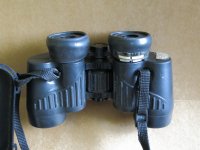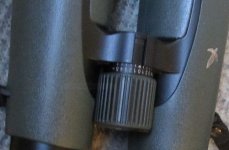Hello,
I have learned about the diopter setting on my binoculars. Setting it correctly has made a world of difference in how fast I can get on focus with a both eyes view. I thought I just had cheap binoculars ..
..
Does anyone use like a little dab of white out or nail polish to mark the diopter setting for quick reference, it seems like it could get changed by mistake pretty easily. I don't think the setting ever changes for my eyes unless my eyes change.
Thanks
I have learned about the diopter setting on my binoculars. Setting it correctly has made a world of difference in how fast I can get on focus with a both eyes view. I thought I just had cheap binoculars
Does anyone use like a little dab of white out or nail polish to mark the diopter setting for quick reference, it seems like it could get changed by mistake pretty easily. I don't think the setting ever changes for my eyes unless my eyes change.
Thanks









